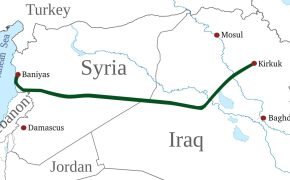Iran’s ‘Khaybar Shekan’ Ballistic Missile Demonstrates Evasive Maneuvers, Captures Attention

The evasive maneuvers executed by Iran’s “Khaybar Shekan” ballistic missile in the final moments of its trajectory before striking its target demonstrate the sophistication of Iranian missile technology, particularly in its ability to evade interception by Israeli defense systems.
A viral video which has spread widely across social media platforms, showcases Iranian “Khaybar Shekan” ballistic missile executing last-moment evasive maneuvers before striking its target in Israel, has drawn significant public attention.
This footage confirms the capabilities of Iran’s ballistic missile technology.
The “Khaybar Shekan”ballistic missile, introduced three years ago, is reported to have maneuvered evasively in the final moments to evade Israeli air defenses.
This evasive action at the end of its trajectory demonstrates the sophistication of Iran’s ballistic missile technology, particularly in avoiding interception by Israeli defense systems.
However, regional defense analysts state that, Iran did not extensively use the “Khaybar Shekan” in its “limited” assault on Israel. Instead, Iran is believed to have predominantly deployed older ballistic missiles in its strike.
To date, Iran confirmed to have used four types of medium-range ballistic missiles (MRBM) in its recent assault on Israel, including the 20-year-old “Ghadr,” the 10-year-old “Emad,” the five-year-old “Dezful,” and the three-year-old “Khaybar Shekan.”
Although the “Khaybar Shekan” was not widely used in last night’s attacks, it successfully evaded interception and struck targets including the Nevatim and Ramon Air Bases located in Israel’s Negev desert.
The Israeli military has confirmed that both crucial air bases sustained damage from the Iranian missile attack.
The “Khaybar Shekan” is a variant of the Fateh-110 ballistic missile, boasting a longer range and utilizing solid propellant.
Read more: Military Knowledge: Khaybar Shekan Ballistic Missile
According to the Islamic Revolutionary Guard Corps of Iran, this missile can strike targets up to 1,450km away, compared to the earlier “Dezful” variant which was publicly revealed in February 2019 with a range of 1,000 km.
The “Khaybar Shekan” is designed for high precision and speed, as demonstrated in attacks against northern Iraq and Syria.
The warhead of the “Khaybar Shekan” reportedly reaches speeds between Mach 7 and Mach 9 during its final flight phase before striking its targets.
In addition to high speed, the missile possesses significant agility, enabling it to overcome enemy air defense systems.
The last reported use of the “Khaybar Shekan” against its adversaries was in January, targeting what it referred to as an “Israeli intelligence center” and “locations of anti-Iran groups” near Erbil in northern Iraq and in Syria.
Read more: IRGC Hybrid Attacks Aimed At Crushing Terrorists, Renewing Warnings to Israel
Iranian media report that the Islamic Revolutionary Guard Corps launched a total of 24 ballistic missiles at targets in northern Iraq and Syria as a “retaliatory” action for the assassination of a senior Iranian military officer and the commander of a pro-Iran armed group. The Iranian missile strike also responded to a deadly terrorist suicide attack in Kermanshah, Iran, which killed approximately 100 civilians.
The ballistic missile attack in Erbil reportedly destroyed one of Israel’s most significant intelligence centers in Erbil, the capital of the semi-autonomous Kurdistan region.
Originally posted on Defence Security Asia




Comment